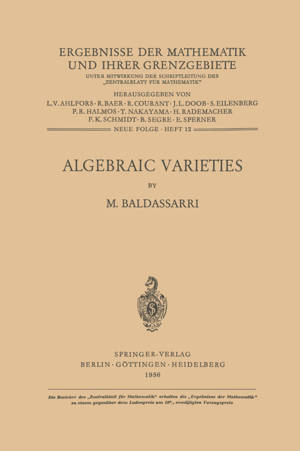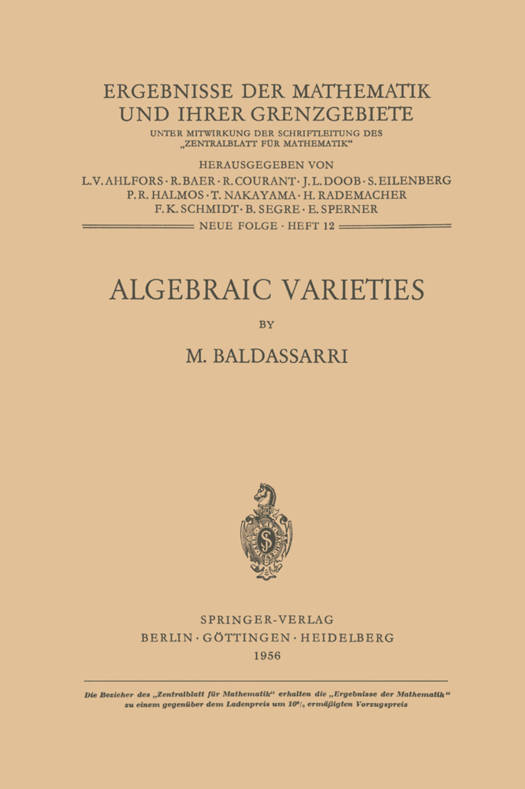
- Afhalen na 1 uur in een winkel met voorraad
- Gratis thuislevering in België vanaf € 30
- Ruim aanbod met 7 miljoen producten
- Afhalen na 1 uur in een winkel met voorraad
- Gratis thuislevering in België vanaf € 30
- Ruim aanbod met 7 miljoen producten
Zoeken
Omschrijving
Algebraic geometry has always been an ec1ectic science, with its roots in algebra, function-theory and topology. Apart from early resear- ches, now about a century old, this beautiful branch of mathematics has for many years been investigated chiefly by the Italian school which, by its pioneer work, based on algebro-geometric methods, has succeeded in building up an imposing body of knowledge. Quite apart from its intrinsic interest, this possesses high heuristic value since it represents an essential step towards the modern achievements. A certain lack of rigour in the c1assical methods, especially with regard to the foundations, is largely justified by the creative impulse revealed in the first stages of our subject; the same phenomenon can be observed, to a greater or less extent, in the historical development of any other science, mathematical or non-mathematical. In any case, within the c1assical domain itself, the foundations were later explored and consolidated, principally by SEVERI, on lines which have frequently inspired further investigations in the abstract field. About twenty-five years ago B. L. VAN DER WAERDEN and, later, O. ZARISKI and A. WEIL, together with their schools, established the methods of modern abstract algebraic geometry which, rejecting the c1assical restriction to the complex groundfield, gave up geometrical intuition and undertook arithmetisation under the growing influence of abstract algebra.
Specificaties
Betrokkenen
- Auteur(s):
- Uitgeverij:
Inhoud
- Aantal bladzijden:
- 196
- Taal:
- Engels
- Reeks:
- Reeksnummer:
- nr. 12
Eigenschappen
- Productcode (EAN):
- 9783642527630
- Verschijningsdatum:
- 21/07/2012
- Uitvoering:
- Paperback
- Formaat:
- Trade paperback (VS)
- Afmetingen:
- 156 mm x 234 mm
- Gewicht:
- 299 g

Alleen bij Standaard Boekhandel
+ 167 punten op je klantenkaart van Standaard Boekhandel
Beoordelingen
We publiceren alleen reviews die voldoen aan de voorwaarden voor reviews. Bekijk onze voorwaarden voor reviews.








